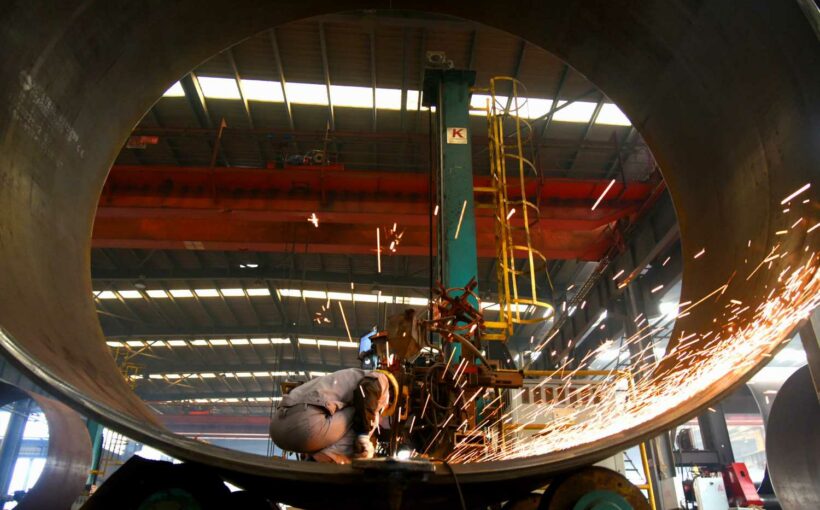- Profits at China's industrial firms grew at a much slower pace in November, the statistics bureau said on Monday, pressured by tumbling prices of some raw materials, a faltering property market and weaker consumer demand.
- Zhu Hong, senior statistician at NBS, said while state efforts to cool soaring wholesale prices in November took cost pressures off downstream industries, the curbs meant the contribution from the mining and raw material sectors to overall profit growth weakened.
- China's red-hot factory-gate inflation cooled slightly in November, driven by a government crackdown on runaway commodity prices and an easing power crunch.
Profits at China's industrial firms grew at a much slower pace in November, the statistics bureau said on Monday, pressured by tumbling prices of some raw materials, a faltering property market and weaker consumer demand.
Profits rose 9.0% on-year in November to 805.96 billion yuan ($126.54 billion), well off the 24.6% gain reported in October.
For the January-November period, industrial firms' profits rose 38.0% year-on-year to 7.98 trillion yuan, slower than the 42.2% rise in the first 10 months of 2021, the statistics bureau said.
Zhu Hong, senior statistician at NBS, said while state efforts to cool soaring wholesale prices in November took cost pressures off downstream industries, the curbs meant the contribution from the mining and raw material sectors to overall profit growth weakened.
"But companies still face great cost pressures, and the improvement in profits for downstream sector needs to be further consolidated," Zhu said in a statement accompanying the data release.
Read more about China from CNBC Pro
Major Asian bank sees more than 30% upside for these 'quality' Chinese real estate stocks
Atlantic Equities downgrades Alibaba to neutral, says rebound is unlikely in near term
Baird downgrades Starbucks, says China among growing list of risks along with omicron, rising costs
China's red-hot factory-gate inflation cooled slightly in November, driven by a government crackdown on runaway commodity prices and an easing power crunch as Beijing scrambled to lessen the crippling economic effects of surging costs.
The world's second-largest economy, which has lost steam after a solid recovery from the pandemic last year, faces multiple challenges as a property downturn deepens, supply bottlenecks persist and strict Covid-19 curbs hit consumer spending.
The country's property distress has also hurt the steel sector while production of cement, glass, and household appliances remains vulnerable to falling demand.
At a key agenda-setting meeting this month, China's top leaders pledged to stabilize the economy and keep growth within a reasonable range in 2022.
The People's Bank of China this month cut the amount of cash that banks must hold in reserve and lowered the one-year benchmark lending rate to stimulate growth.
The industrial profit data covers large firms with annual revenue of over 20 million yuan from their main operations.
Source: Read Full Article
